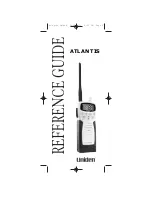
BARRETT 2030 HF SSB TRANSCEIVER
914 series manual tap whip antenna
- Barrett P/N BC91401 to BC91424
Installation
914 series manual tapped whip antennas are mounted on vehicles using a heavy
duty base and spring (Barrett P/N BCA91400). The whip should be mounted on the
vehicle in positions such as those illustrated in the diagrams below. A bracket,
fabricated to withstand the forces and vibration that can be expected during off-road
driving, should be used to mount the antenna base and spring to the vehicle. When
locating the mounting position for the antenna, the ring located above the label at
the bottom of the whip should be level with the surrounding ground plane, e.g. the
bonnet of the vehicle or the roof of the vehicle. Ensure that the mounting bolt on
the base and spring is electrically bonded to the chassis of the vehicle via a very
low resistance path, i.e. clean all joints to bare metal and use braid earth straps if
any non-metal joints are encountered. Use only good quality coaxial cable and
water proof UHF connectors (such as those supplied by Barrett Communications).
Do not use PL-259 UHF connectors.
When running the coaxial cable from the antenna to the transceiver avoid sharp
corners and heat such as that generated by the manifold of the engine. After
installing the antenna check the antenna VSWR on each channel. Generally if the
antenna has been mounted in the positions as illustrated, the VSWR will be less
than 1.6-1 and no adjustment is necessary. If the VSWR is not lower than 2:1 the
antenna to ground capacitance in that installation is probably outside of the design
range of the factory set tuning. Consideration may be given to retuning the whip if
the VSWR is so high as to cause the transmitter ALC system to begin to reduce
power (to protect the transmitter).
194 of 208















































